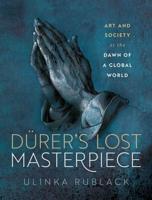Publisher's Synopsis
Expressionism is foremost associated with perhaps the most important contribution of German art to Modernism, evoking the names of the artists' association "Die Brucke" in Dresden, the "Blaue Reiter" in Munich, the Austrian scene with Schiele and Kokoschka or the works of the Fauves in Paris.;This book, however, does not solely focus on these moments of origin, but endeavours to show the way the "red scar" of the expressive runs through all art of the late 19th and 20th centuries. The project draws a line from Gauguin, van Gogh and Munch, the most important inspirations for a movement laden with emotions and endowed with the furor of rebellion, to the expressive tendencies in art of the times in between the wars and after World War II all the way to contemporary Neo-Expressionism. Picasso, whose oeuvre features expressionistic aspects throughout and from the very beginning, may be seen as a kind of hinge. In his essay, the philosopher, art historian and art critic Donald Kuspit the head curator of the Fondation Beyeler, explores Expressionism looking backwards from Neo-Expressionism. The publication is rounded out by 17 shorter texts, each of which starts out at the central work of one of the major artists in order to show how that "red scar" of sheer expressive art manifests itself.










